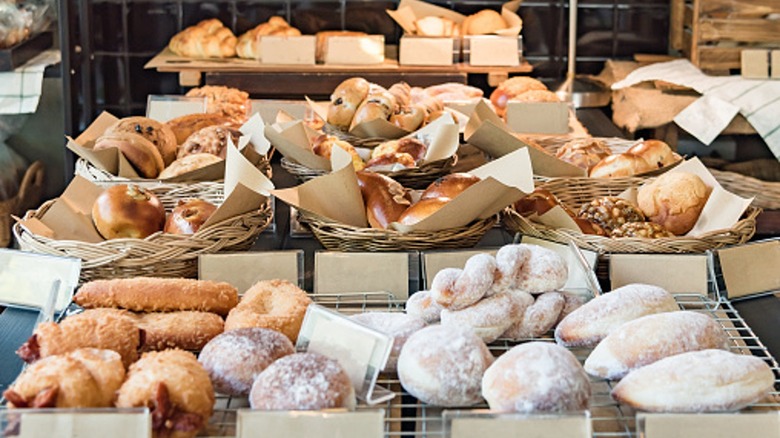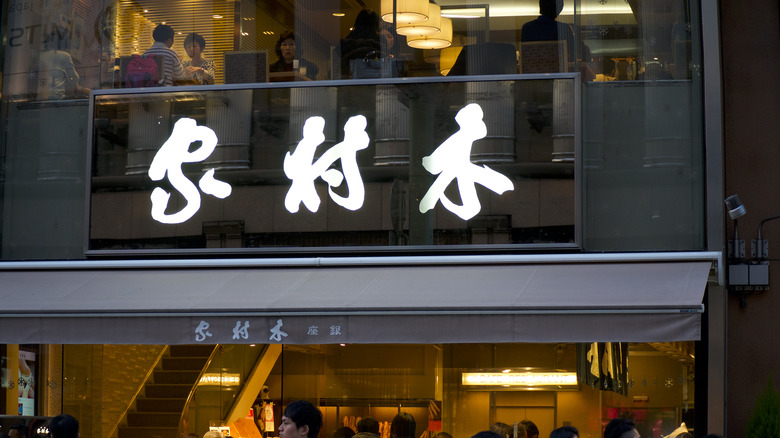The Fascinating History Of Japan's Oldest Bakery
Some travelers seek out historical places to walk in places of those who came before. Others look for foodie destinations with historical significance to take a literal bite out of history. Tokyo's Ginza Kimuraya is one such destination where it is possible to feast on recipes once served to emperors.
The bakery has been baking bread rolls since the 1800s. According to President and CEO Mikiko Kimura, the founder of Kimuraya was samurai warrior Yasubei Kimura, who worked under a Dutch-trained baker. Since yeast was difficult to come by in Japan, Yasubei developed a special yeast mash and began selling his products in 1869. Thanks to the former samurai's efforts, not only does the establishment boast the title of Japan's oldest bakery, it also lays claim to anpan, a soft bun made with a red bean paste. Before these fluffy sweet treats were created, bread rolls were dense, a bit bitter, and required some grit to bite into.
After Yasubei developed the yeast known as sakadane, his fermented dough could help build a different taste and texture for eaters to enjoy at Ginza Kimuraya. Sakadane is made similarly to sourdough starter, except wild fermentative yeast is cultured with koji and boiled rice. "The speed of natural fermentation varies according to the status of the yeast. It will sometimes take one week after mixture to be ready for use, so that takes us far from efficiency. Yet, we are committed to using natural yeast," Mikiko told Tokyo Ginza Official.
Dedicated to promoting bread culture
"Since the time of establishment, our mission has been to spread bread culture throughout Japan, so we have not even patented our Anpan recipe," Mikiko Kimura told Tokyo Ginza Official. At the bakery, visitors can taste the exact same recipe now as what was ordered by Emperor Meiji for a little over $1 USD per bun. Though it is possible to find copycat recipes throughout the country, the bakery's recipes offer a unique taste due to their special yeast and fermentation process. True to mission, the bakery cranks out over 100 different kinds of bread each day if you want to sample other flavors.
Mikiko Kimura notes that 30-40% of customers who visit the bakery are foreigners. To cater to visiting palates, the bakery created "An Butter Pan," a baguette filled with anko and butter. On the second floor, a restaurant and cafe serves up sandwiches and bread for shoppers to take home. For those with heavier appetites, the third floor of the establishment is home to the Western Grill Room where more substantial dishes of beef stew are served. A French bistro is on the fourth floor, and though the menu is a bit pricier here, the windows offer views of the surrounding shopping area known as Ginza, so you can contemplate what life might have been like centuries before.

